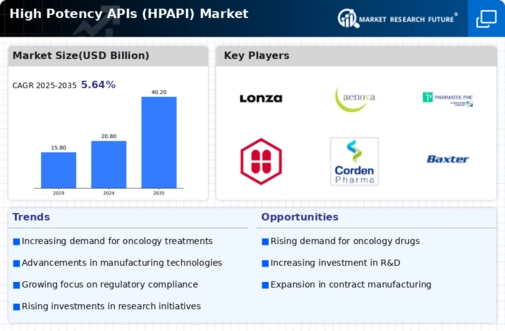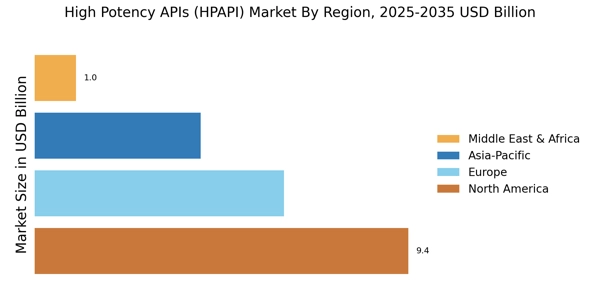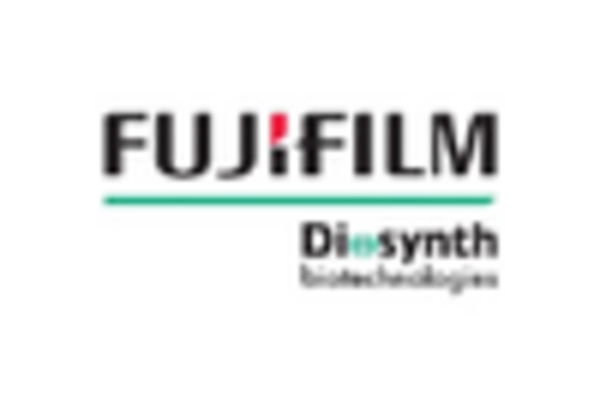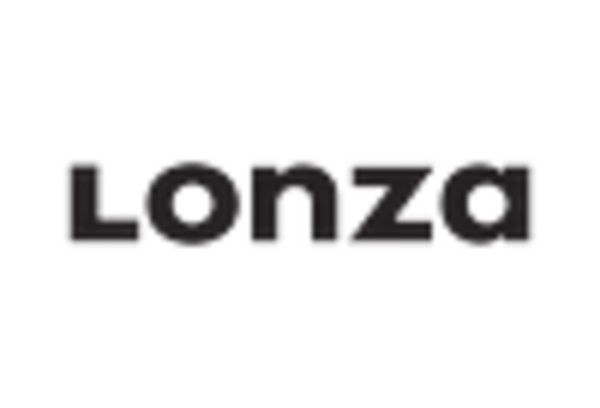Expansion of Biopharmaceutical Sector
The expansion of the biopharmaceutical sector is a significant driver for the High Potency APIs Market (HPAPI) Market. As biopharmaceuticals gain traction due to their ability to target specific disease mechanisms, the demand for HPAPIs, which are often integral to these therapies, is expected to rise. The biopharmaceutical market has been experiencing robust growth, with projections indicating a compound annual growth rate that outpaces traditional pharmaceuticals. This trend suggests that HPAPIs will play an increasingly vital role in the development of next-generation biotherapeutics, further propelling the market forward. The synergy between biopharmaceuticals and HPAPIs is likely to create new opportunities for innovation and collaboration within the industry.
Increasing Prevalence of Chronic Diseases
The rising incidence of chronic diseases such as cancer, diabetes, and cardiovascular disorders is a primary driver for the High Potency APIs Market (HPAPI) Market. As these diseases become more prevalent, the demand for targeted therapies that utilize HPAPIs is expected to surge. According to recent data, the oncology segment alone is projected to account for a substantial share of the HPAPI market, driven by the need for more effective treatment options. This trend indicates a shift towards personalized medicine, where HPAPIs play a crucial role in developing therapies that are tailored to individual patient needs. Consequently, pharmaceutical companies are increasingly investing in HPAPI development to meet this growing demand, thereby propelling the market forward.
Regulatory Support for Innovative Therapies
Regulatory bodies are increasingly supporting the development of innovative therapies, which is likely to benefit the High Potency APIs Market (HPAPI) Market. Initiatives aimed at expediting the approval process for new drugs, particularly those utilizing HPAPIs, are becoming more common. For instance, the introduction of fast-track designations and priority review pathways has encouraged pharmaceutical companies to invest in HPAPI research and development. This regulatory environment fosters innovation and enhances the market's growth potential. As a result, the HPAPI market is expected to witness a significant increase in new product launches, further solidifying its position within the pharmaceutical landscape.
Rising Investment in Research and Development
Rising investment in research and development (R&D) is a crucial driver for the High Potency APIs Market (HPAPI) Market. Pharmaceutical companies are allocating substantial resources towards R&D to discover and develop new HPAPIs that can address unmet medical needs. This trend is particularly evident in the oncology and rare disease segments, where the potential for high returns on investment is significant. Data indicates that R&D spending in the pharmaceutical sector has been steadily increasing, with a notable portion directed towards HPAPI-related projects. This influx of investment is likely to accelerate the pace of innovation, leading to the introduction of novel therapies and expanding the overall market landscape.
Technological Advancements in Drug Development
Technological advancements in drug development are transforming the High Potency APIs Market (HPAPI) Market. Innovations in synthesis and formulation technologies are enabling the production of HPAPIs with improved efficacy and safety profiles. For example, the adoption of continuous manufacturing processes has been shown to enhance the efficiency of HPAPI production, reducing costs and time-to-market. Furthermore, advancements in analytical techniques allow for better characterization and quality control of HPAPIs, ensuring compliance with stringent regulatory standards. These technological improvements are likely to attract more investments into the HPAPI sector, driving market growth and expanding the range of available therapies.


















Leave a Comment